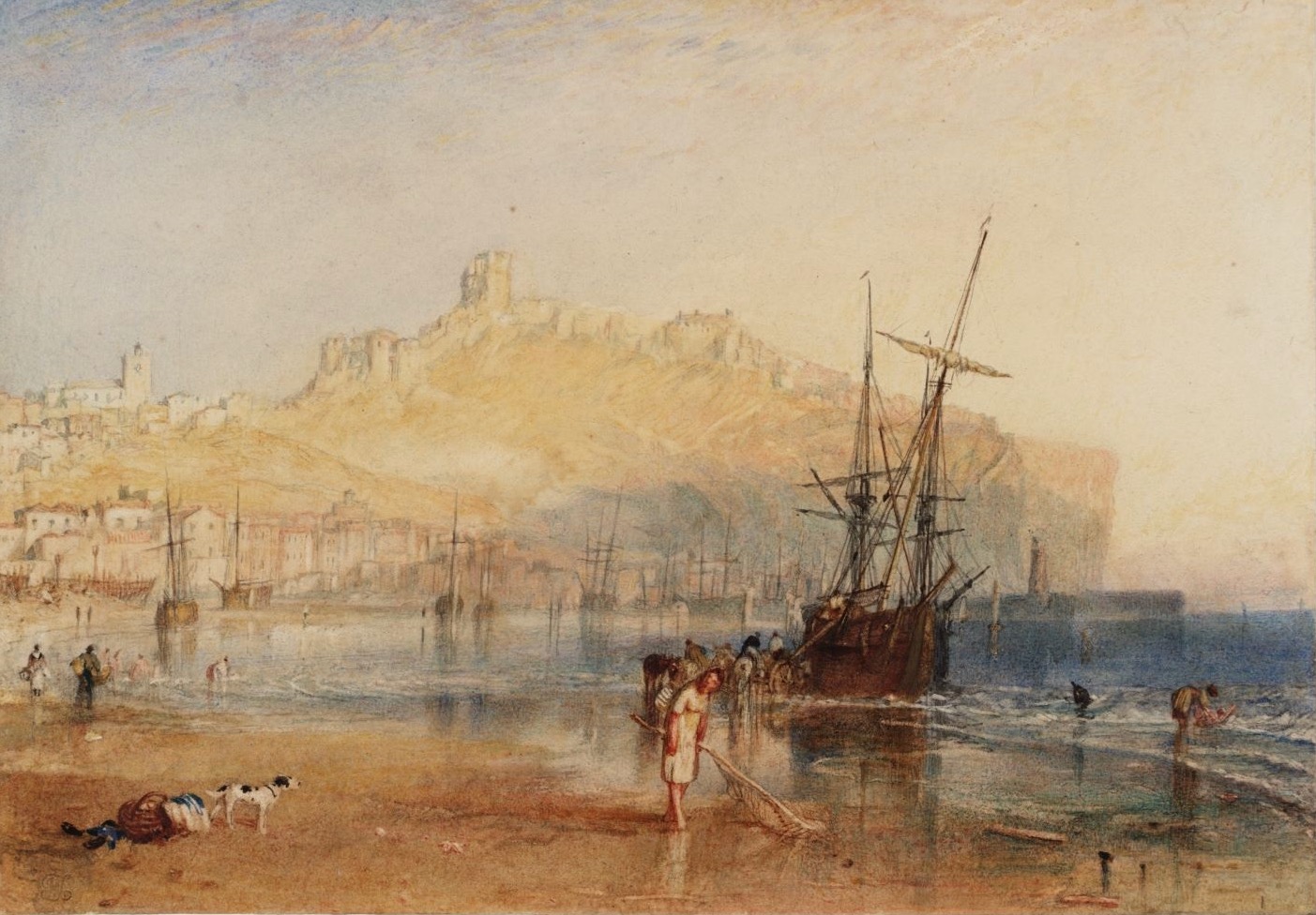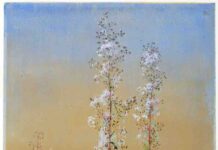
Watercolor played a critical role in defining J.M.W. Turner’s deeply personal style. The artist’s vast legacy comprises more than 30,000 works on paper, 300 oil paintings, and 280 sketchbooks, known as the “Turner Bequest,” which was donated to Great Britain after the artist’s death in 1851 and mostly conserved at Tate Britain. The bequest includes the entire body of works housed in the artist’s personal studio and produced over the years for his “own pleasure,” to cite the words used by the critic John Ruskin.
Turner was a lifelong watercolorist and fundamentally shaped what was understood to be possible within the medium during his lifetime and after. An inveterate traveler, Turner rarely left home without a rolled-up, loose-bound sketchbook, pencils, and a small traveling case of watercolors. These memories of journeys, emotions, and fragments of landscapes seen during his long stays abroad illustrate the development of Turner’s stylistic language focused on experimenting with the expressive potential of light and color.

The radical developments in Turner’s style anticipated trends of the late 19th century. From his love of seaside towns to his interest in depicting atmospheric English and Alpine landscapes, and his detailed study of domestic interiors and architectural reliefs, the artist devoted himself tirelessly to experimentation, particularly in watercolors, with a compositional and stylistic freedom and an innovative and surprising use of colors that led his peers to believe that Turner “appeared to paint with his eyes and nose as well as his hand.”
Deemed to be an extraordinary artist ever since his own time, Turner has had a profound and continuing influence on artists that continues to this day.








J.M.W.Turner … the greatest Watercolourist that ever lived. He, and Thomas Girtin, changed Watercolour from mere coloured drawings and topographical description, to a fully realized Artist’s medium in it’s own right. In my early art student days in London, I took advantage of the Student’s Room at the British Museum, where the Turner Bequest was held, pre Tate Britain, to see most of his myriad works on paper. There’s nothing quite like holding his actual sketchbooks in your hands and leafing through the pages one by one … a window into the mind of the Master.
Fort Worth’s Kimbell museum is exhibiting a comprehensive show of Turner’s work right now (Nov ’21-Feb’22). Yes, love his smaller works in watercolor and the few sketchbooks featured which offer insight into how he worked. On the one hand, he was so detailed in his sketches as a prep for his larger paintings (usually the oils) yet Turner appears to over-ride the “particular” to make such forceful images of nature and the industrial age he loved.
Right now there is an exhibit of Turner’s oil work at the Kimbell in Ft. Worth. It will be there until February 6, 2022.